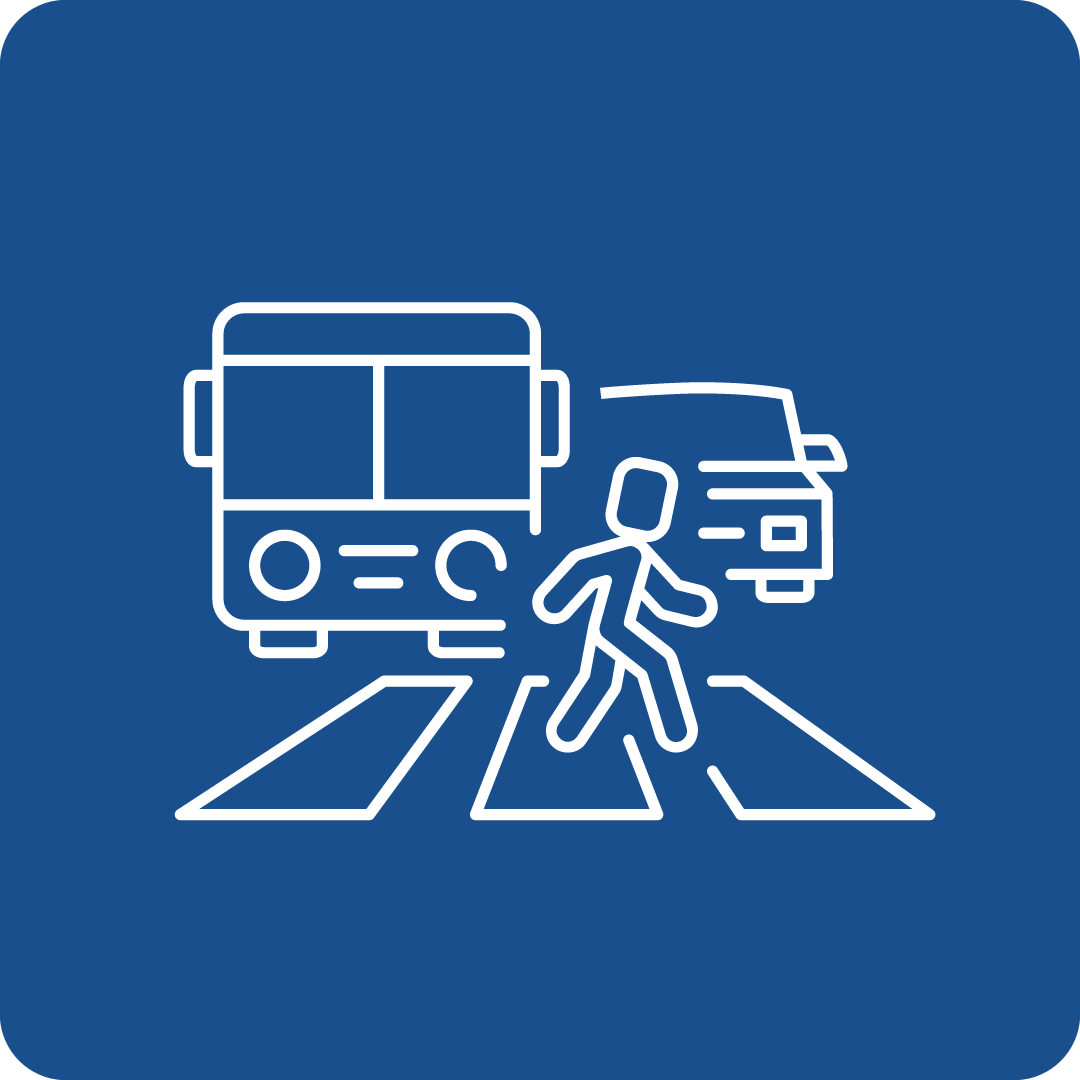Filter Search for grants
Call Navigation
Deadline expired
The deadline for this call has expired.
Call key data
Safe post-crash management of road Light Duty Battery Electric Vehicles (BEVs) (2ZERO Partnership)
Funding Program
Horizon Europe: Cluster 5 - Climate, Energy and Mobility
Call number
HORIZON-CL5-2025-04-D5-03
deadlines
Opening
06.05.2025
Deadline
04.09.2025 17:00
Funding rate
70%
Call budget
€ 5,000,000.00
Estimated EU contribution per project
€ 5,000,000.00
Link to the call
Link to the submission
Call content
short description
In addition to protection during a collision, it is the post-crash phase, immediately after the collision, that is crucial for the consequences of a road crash. Vehicle fires are a key concern in this post-crash phase. While there are many similarities to fires in vehicles with Internal Combustion Engines (ICEV), road electric vehicle battery fires pose a range of new challenges to emergency responders and everyone handling EVs post-incident, including tow, repair, storage, salvage & wrecking.
Call objectives
The rescue of victims, the safety of first responders and safe, efficient, and timely firefighting measures are key factors. The latter in particular poses important challenges specific to road electric vehicles, amongst others due to the chemical composition of state-of-the-art lithium-ion batteries, the placement of the battery in the vehicles, enclosed in a water-tight, protective compartment, and the volume of water needed to cool a burning high-capacity battery. This is a challenge in particular in constrained spaces, such as in tunnels.
There is a need to support the definition of standards and procedures both in terms of risk but also in terms of response. With a focus on Light Duty Battery Electric Vehicles (BEVs), proposed actions will identify and further develop optimum technological solutions, processes and best practices towards future standards, design guidelines and official instructions / service regulations.
Expected effects and impacts
Proposals are expected to address all the following aspects:
- Vehicle health assessment tools after a crash, with a focus on the assessment of the battery and high-voltage system condition, ensuring that the HV battery is in a safe and stable condition (avoidance or early detection of thermal runaway after a collision), and maximising the likelihood of keeping the battery in service in the vehicle once fixed / re-using it, in line with the proposed regulation on circularity requirements, eco-design and end-of-life of vehicles. Both on-board monitoring systems and off-board systems can be considered;
- If making use of connectivity to on-board monitoring systems, the accessibility to the health and safety information / data needs to be addressed. This includes the development of state of safety and state of health algorithms to provide the remaining useful life and potential safety risks of the battery after a collision, complementing the information on the digital battery passport;
- Extrication procedures protecting both crash victims and emergency service workers to the best possible extent, also considering the gender dimension. To ensure the effectiveness of fire handling, suppression, and rescue procedures for crashed BEVs, it is crucial to further develop these practices in close collaboration with first responders;
- Fire extinguishing techniques and firefighting procedures for BEVs (if the case also including innovative fire extinguishing media), considering the risks specific for EV including potential toxic products of the associated chemical reactions, as well as vehicle designs supporting firefighting. Particular attention should be paid to the design of the battery pack and its integration into the vehicle, including auxiliaries;
- Develop and implement procedures and tools for the safe handover, handling, transport and storage of crashed BEVs, with wide dissemination to relevant stakeholders towards standardised procedures;
- Quantify the rate and severity of BEV fire safety impacts by conducting a comparative study addressing aspects such as frequency of BEV fire and severity of outcome, and provide statistical analysis to deliver science-based communication on the safety of Light Duty BEVs to the general public;
- Real-life demonstration (in comparison to the state-of-art) of Light Duty (vehicle category M1 and N1) BEV condition assessment tools, data analysis, as well as firefighting, rescue, and handling procedures on a series production vehicle;
The project should actively seek interaction with and make use of results from workshops on EV fire safety currently being organised under the IEA HEV Technology Collaboration Programme, and where relevant with the Sustainable Transport Forum Task Force 6: “Developments for fire safe deployment of recharging points in covered parking garages”.
The project should take account Open Science, its practices and learning, and the project’s results will be enacted in line with FAIR principles for data.
This topic implements the co-programmed European Partnership on ‘Towards zero emission road transport’ (2ZERO). As such, projects resulting from this topic will be expected to report on the results to the European Partnership ‘Towards zero emission road transport’ (2ZERO) in support of the monitoring of its KPIs.
read more
Expected results
Project results are expected to contribute to all the following outcomes:
- Significant improvement of vehicle designs (especially the design of the most recent battery pack and its integration into the vehicle) from the perspective of fire-hazard reduction, fire suppression, crashworthiness and post-crash handling compared with the baseline vehicle, following specific design guidelines;
- Advanced BEV condition assessment methods and tools with a focus on the condition of the battery as the most critical sub-system, providing safety-relevant information in a standardised format useful for rescue, towing and after-treatment services, complementing the digital battery passport, ensuring the safety of workers in all these phases, minimising environmental hazards and easy to apply by practitioners – towards standardised procedures;
- Re-purposing/re-using/re-cycling of batteries from crashed BEVs facilitated by tailored interventions, high confidence in battery health condition and standardised handover protocols, thus supporting potential second-life applications of batteries from crashed BEVs;
- Best practices in fire handling and fire suppression, rescue procedures and handling of crashed Light Duty BEVs applied all over Europe, supported by training material and instructions for ‘first responders’, such as firefighters and emergency service workers;
- Dispelling safety concerns of (potential) BEV users as well as policy/decision makers by science-based communication and comparative statistics.
read more
Eligibility Criteria
Regions / countries for funding
Moldova (Moldova), Albania (Shqipëria), Armenia (Հայաստան), Bosnia and Herzegovina (Bosna i Hercegovina / Босна и Херцеговина), Canada, Faeroes (Føroyar / Færøerne), Georgia (საქართველო), Iceland (Ísland), Israel (ישראל / إِسْرَائِيل), Kosovo (Kosova/Kosovë / Косово), Montenegro (Црна Гора), New Zealand (Aotearoa), North Macedonia (Северна Македонија), Norway (Norge), Serbia (Srbija/Сpбија), Tunisia (تونس /Tūnis), Türkiye, Ukraine (Україна), United Kingdom
eligible entities
EU Body, Education and training institution, Non-Profit Organisation (NPO) / Non-Governmental Organisation (NGO), Other, Private institution, incl. private company (private for profit), Public Body (national, regional and local; incl. EGTCs), Research Institution incl. University, Small and medium-sized enterprise (SME)
Mandatory partnership
Yes
Project Partnership
To be eligible for funding, applicants must be established in one of the following countries:
- the Member States of the European Union, including their outermost regions
- the Overseas Countries and Territories (OCTs) linked to the Member States
- countries associated to Horizon Europe - see list of particpating countries
Only legal entities forming a consortium are eligible to participate in actions provided that the consortium includes, as beneficiaries, three legal entities independent from each other and each established in a different country as follows:
- at least one independent legal entity established in a Member State; and
- at least two other independent legal entities, each established in different Member States or Associated Countries.
Any legal entity, regardless of its place of establishment, including legal entities from non-associated third countries or international organisations (including international European research organisations) is eligible to participate (whether it is eligible for funding or not), provided that the conditions laid down in the Horizon Europe Regulation have been met, along with any other conditions laid down in the specific call topic.
A ‘legal entity’ means any natural or legal person created and recognised as such under national law, EU law or international law, which has legal personality and which may, acting in its own name, exercise rights and be subject to obligations, or an entity without legal personality.
other eligibility criteria
Specific cases:
- Affiliated entities (i.e. entities with a legal or capital link to a beneficiary which participate in the action with similar rights and obligations to the beneficiaries, but which do not sign the grant agreement and therefore do not become beneficiaries themselves) are allowed, if they are eligible for participation and funding.
- Associated partners (i.e. entities which participate in the action without signing the grant agreement, and without the right to charge costs or claim contributions) are allowed, subject to any conditions regarding associated partners set out in the specific call conditions.
- Entities which do not have legal personality under their national law may exceptionally participate, provided that their representatives have the capacity to undertake legal obligations on their behalf, and offer guarantees to protect the EU’s financial interests equivalent to those offered by legal persons.
- Legal entities created under EU law (EU bodies) including decentralised agencies may be part of the consortium, unless provided for otherwise in their basic act.
- International European research organisations are eligible to receive funding. International organisations with headquarters in a Member State or Associated Country are eligible to receive funding for ‘Training and mobility’ actions or when provided for in the specific call/topic conditions. Other international organisations are not eligible to receive funding, unless provided for in the specific call/topic conditions, or if their participation is considered essential for implementing the action by the granting authority.
- Joint Research Centre (JRC)— Where provided for in the specific call conditions, applicants may include in their proposals the possible contribution of the JRC but the JRC will not participate in the preparation and submission of the proposal. Applicants will indicate the contribution that the JRC could bring to the project based on the scope of the topic text. After the evaluation process, the JRC and the consortium selected for funding may come to an agreement on the specific terms of the participation of the JRC. If an agreement is found, the JRC may accede to the grant agreement as beneficiary requesting zero funding or participate as an associated partner, and would accede to the consortium as a member.
- Associations and interest groupings — Entities composed of members (e.g. European research infrastructure consortia (ERICs)) may participate as ‘sole beneficiaries’ or ‘beneficiaries without legal personality’. However, if the action is in practice implemented by the individual members, those members should also participate (either as beneficiaries or as affiliated entities, otherwise their costs will NOT be eligible.
- EU restrictive measures — Entities subject to EU restrictive measures under Article 29 of the Treaty on the European Union (TEU) and Article 215 of the Treaty on the Functioning of the EU (TFEU) as well as Article 75 TFEU, are not eligible to participate in any capacity, including as beneficiaries, affiliated entities, associated partners, third parties giving in-kind contributions, subcontractors or recipients of financial support to third parties (if any).
- Legal entities established in Russia, Belarus, or in non-government controlled territories of Ukraine — Given the illegal invasion of Ukraine by Russia and the involvement of Belarus, there is currently no appropriate context allowing the implementation of the actions foreseen in this programme with legal entities established in Russia, Belarus, or in non-government controlled territories of Ukraine. Therefore, even where such entities are not subject to EU restrictive measures, such legal entities are not eligible to participate in any capacity. This includes participation as beneficiaries, affiliated entities, associated partners, third parties giving in-kind contributions, subcontractors or recipients of financial support to third parties (if any). Exceptions may be granted on a case-by-case basis for justified reasons.
With specific regard to measures addressed to Russia, following the adoption of the Council Regulation (EU) 2024/1745 of 24 June 2024 (amending Council Regulation (EU) No 833/2014 of 31 July 2014) concerning restrictive measures in view of Russia’s actions destabilising the situation in Ukraine, legal entities established outside Russia but whose proprietary rights are directly or indirectly owned for more than 50% by a legal person, entity or body established in Russia are also not eligible to participate in any capacity. - Measures for the protection of the Union budget against breaches of the principles of the rule of law in Hungary — Following the Council Implementing Decision (EU) 2022/2506, as of 16 December 2022, no legal commitments can be entered into with Hungarian public interest trusts established under the Hungarian Act IX of 2021 or any entity they maintain. Affected entities may continue to apply to calls for proposals and can participate without receiving EU funding, as associated partners, if allowed by the call conditions. However, as long as the Council measures are not lifted, such entities are not eligible to participate in any funded role (beneficiaries, affiliated entities, subcontractors, recipients of financial support to third parties, etc.).In case of multi-beneficiary grant calls, applicants will be invited to remove or replace that entity in any funded role and/or to change its status into associated partner. Tasks and budget may be redistributed accordingly.
Additional information
Topics
Relevance for EU Macro-Region
EUSAIR - EU Strategy for the Adriatic and Ionian Region, EUSALP - EU Strategy for the Alpine Space, EUSBSR - EU Strategy for the Baltic Sea Region, EUSDR - EU Strategy for the Danube Region
UN Sustainable Development Goals (UN-SDGs)
![]()
Additional Information
Applications must be submitted electronically via the Funders & Tenders Portal electronic submission system (accessible via the topic page in the Search Funding & Tenders section). Paper submissions are NOT possible.
Applications must be submitted using the forms provided inside the electronic submission system (not the templates available on the topic page, which are only for information). The structure and presentation must correspond to the instructions given in the forms.
Applications must be complete and contain all parts and mandatory annexes and supporting documents.
The application form will have two parts:
- Part A (to be filled in directly online) contains administrative information about the applicant organisations (future coordinator and beneficiaries and affiliated entities), the summarised budget for the proposal and call-specific questions;
- Part B (to be downloaded from the Portal submission system, completed and then assembled and re-uploaded as a PDF in the system) contains the technical description of the project.
Annexes and supporting documents will be directly available in the submission system and must be uploaded as PDF files (or other formats allowed by the system).
The limit for a full application (Part B) is 50 pages.
Eligible costs will take the form of a lump sum as defined in the Decision of 7 July 2021 authorising the use of lump sum contributions under the Horizon Europe Programme – the Framework Programme for Research and Innovation (2021-2027) – and in actions under the Research and Training Programme of the European Atomic Energy Community (2021-2025). It is mandatory to submit a detailed budget table using the template available in the Submission system.
Activities are expected to achieve TRL 6 by the end of the project.
Call documents
Horizon Europe Work Programme 2025 Cluster 5 - Climate, Energy and MobilityHorizon Europe Work Programme 2025 Cluster 5 - Climate, Energy and Mobility(2548kB)
Contact
To see more information about this call, you can register for free here
or log in with an existing account.
Log in
Register now


